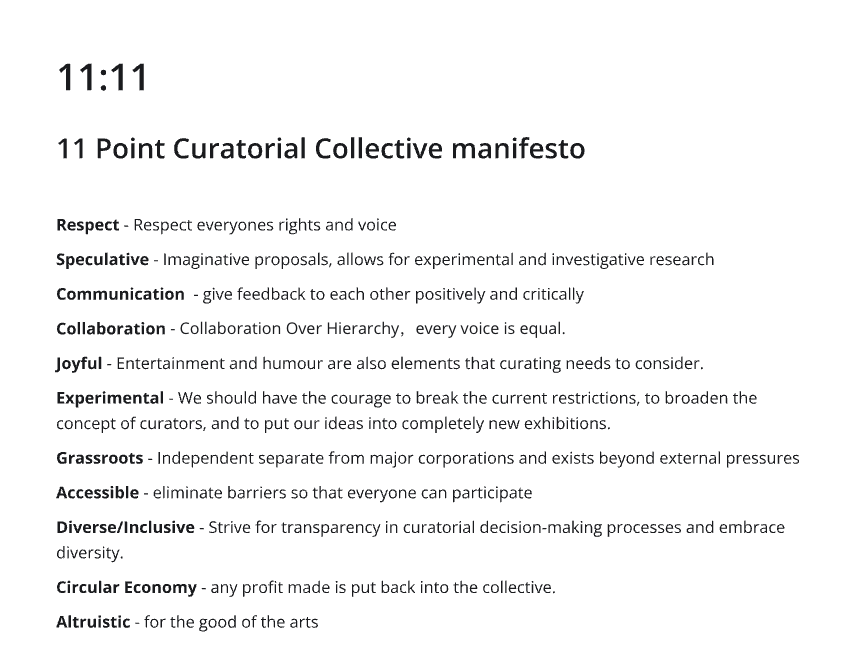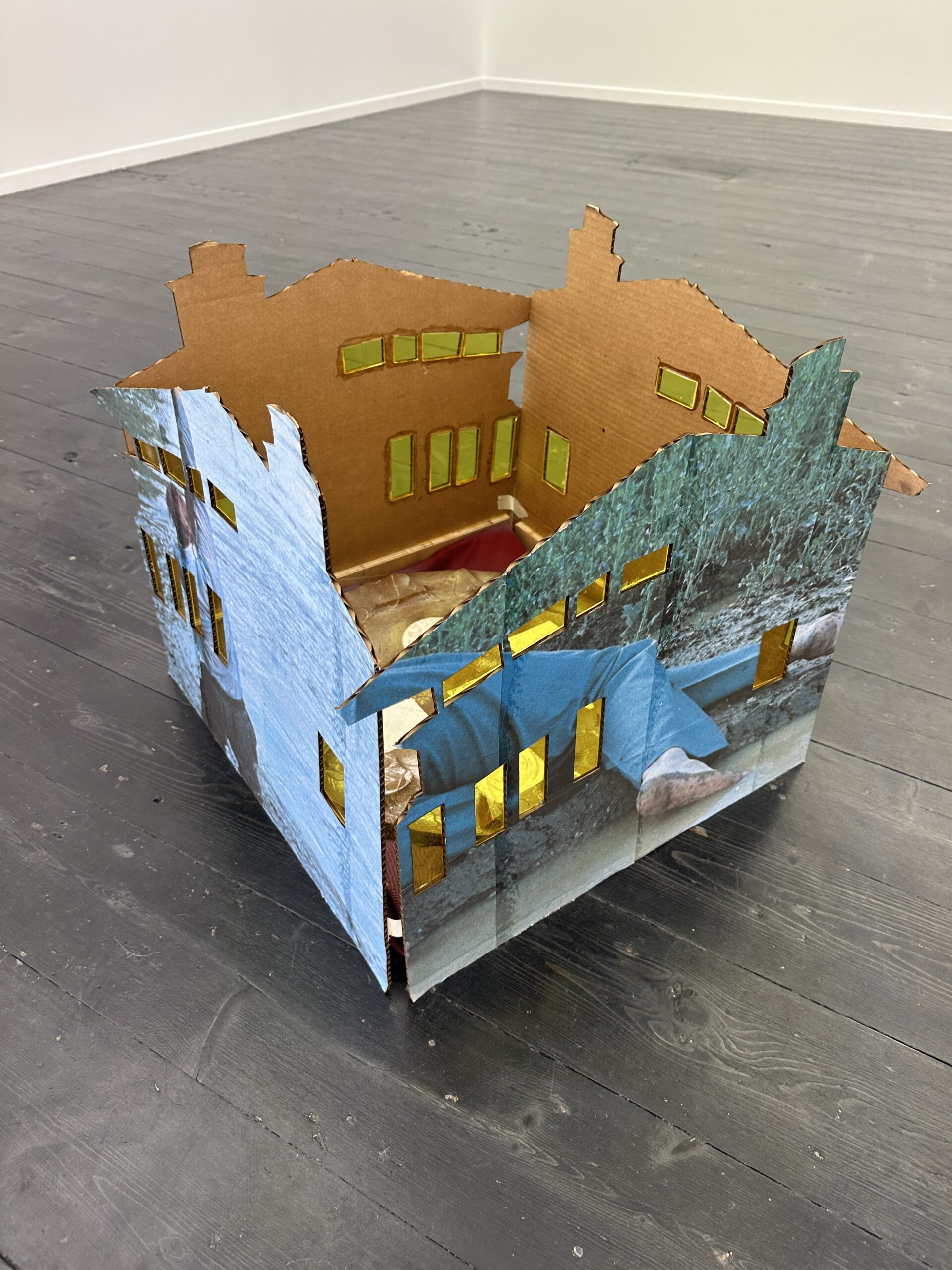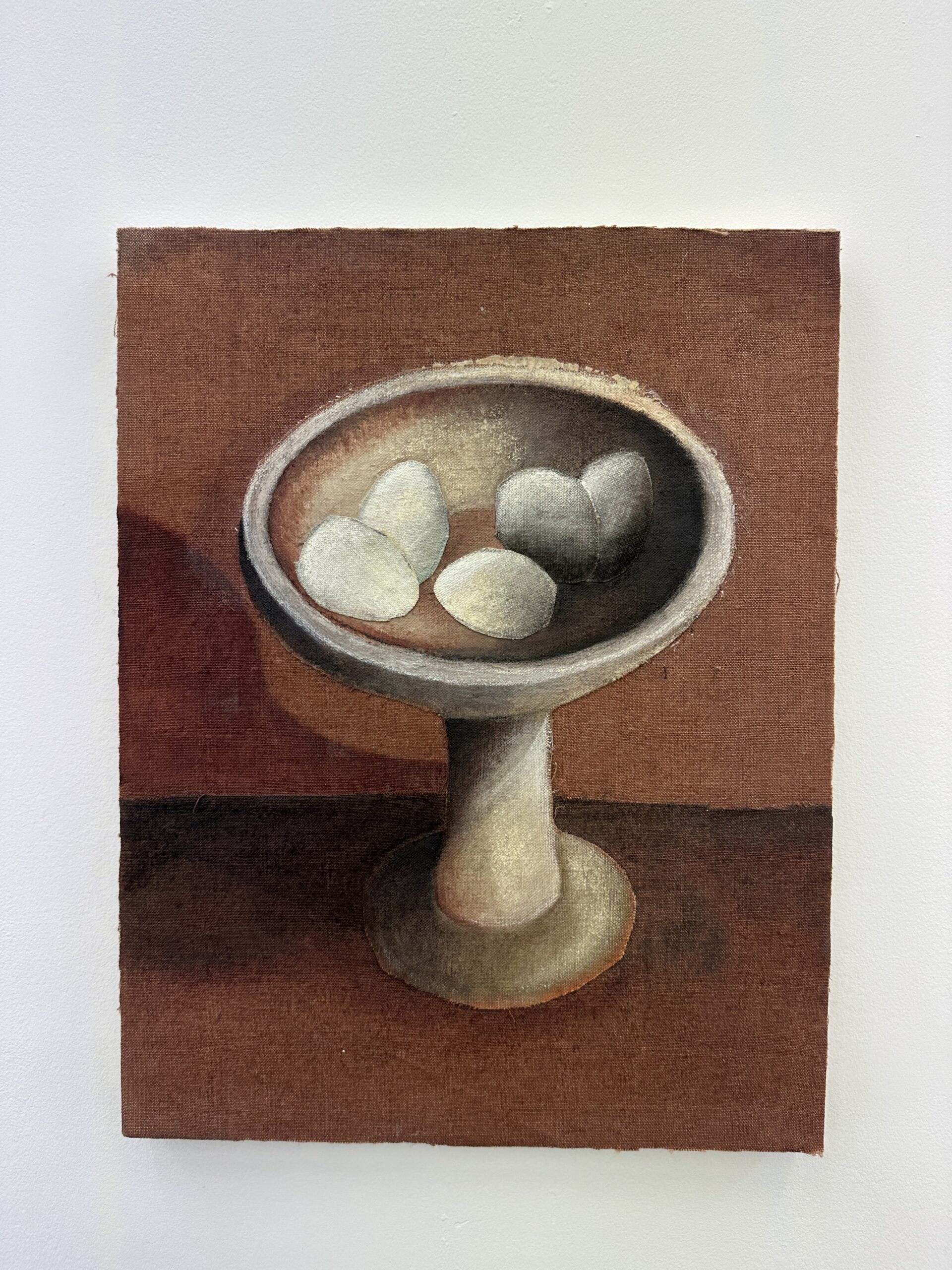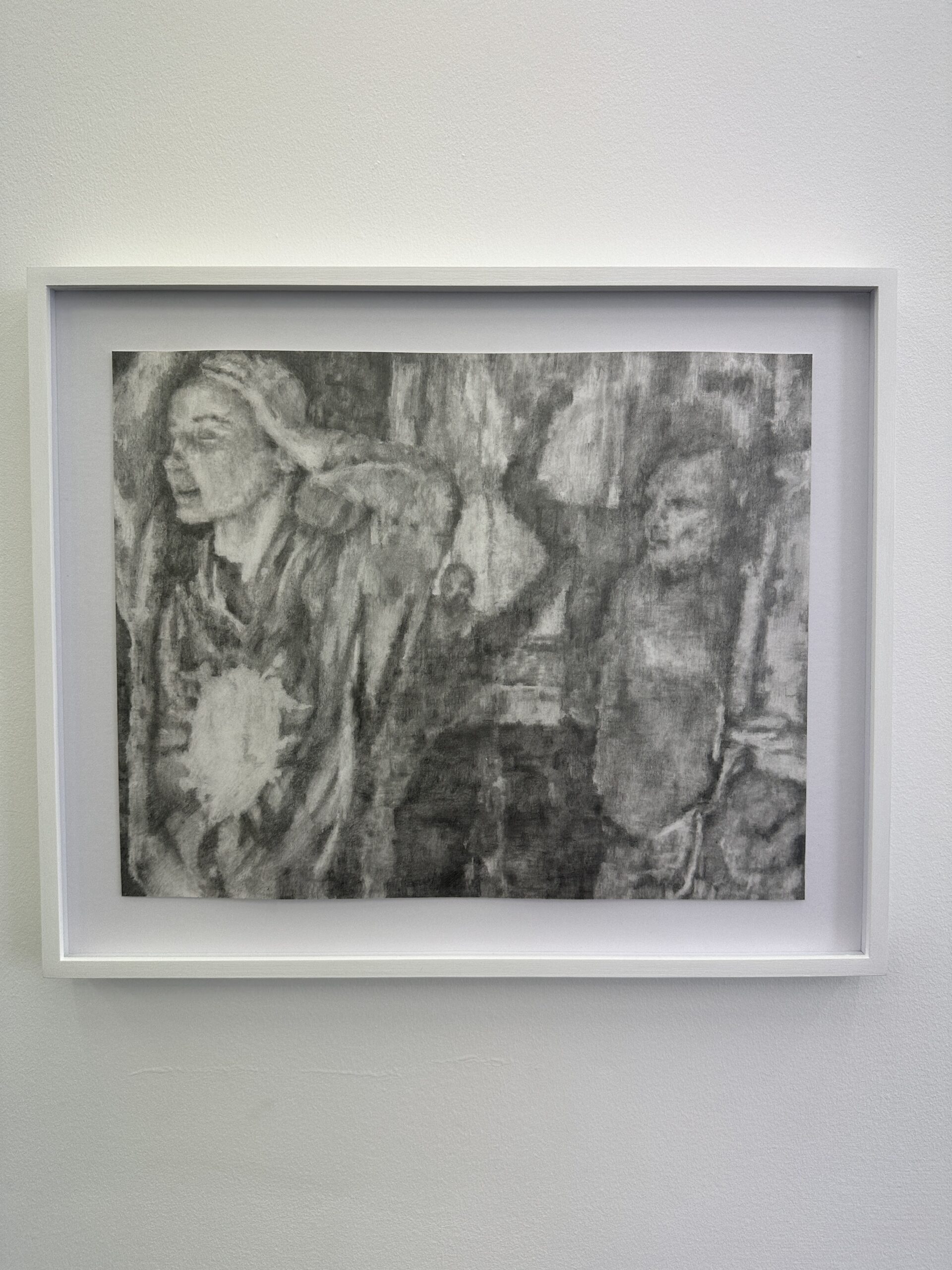💡 This week’s key words: Co-creation, decentralization, curatorial responsibility
🌱 Curatorial team Progress: lucky number 11:11
This week, our curatorial group finally has an official name—11:11 ✨! The inspiration for this name came from one of my personal quirks—I always see 11:11 as a lucky moment. When I realized that our group had exactly 11 members, the name just felt right!
Why 11:11?
In the occult, 11:11 is known as an angelic number, symbolizing good luck, inspiration, and guidance.
The name reflects our vision for curating—we want to create an open, positive, and collaborative atmosphere, where everyone’s ideas can shine and contribute to something greater.
Curating is not just about exhibitions, it is about co-creation between people, and our group itself is an experimental space for collective growth.
My friend Yiran Gu and I both felt it was a great idea, so we brought it up to the group! 🎉
In addition, I helped further refine the group’s Mission Statement, which I proposed:
“Curating for the Future”
Curation is responsibility. From material selection to energy consumption, we integrate Sustainability into our curatorial practices, ensuring that our exhibitions are not only conceptually forward-looking, but also operationally consistent with environmental justice principles.
“Curating for the Future”
Curation is responsibility. From material selection to energy consumption, we integrate Sustainability into our curatorial practices, ensuring that our exhibitions are not only conceptually forward-looking, but also operationally consistent with environmental justice principles.

🚀 Personal curatorial project progress:
In terms of personal curatorial projects, I continue the vision of last week and continue to promote the research of Decentralized Curation. The focus of this week is to make my curatorial ideas more specific, gradually from concept to practice! 💡
🔍 What’s Next?
1️⃣ Deepen research on curatorial models based on blockchain
This week’s reading of Rugg & Sedgwick’s (2007) Issues in Curating Contemporary Art and Performance, which explores how curatorial power structures affect audience experience, got me thinking further:
Does decentralized curation really empower the audience, or is it just a “democratizing” strategy for curators?
At the same time, I’m looking at the case of the Zien Foundation, which uses the NFT to let the audience vote directly on the content of the exhibition, rather than the curators alone. This model is enlightening, but it also makes me wonder if “co-curating” is really fair. Or will it be dominated by economic capital?
2️⃣ Outline the exhibition layout & interactive tools
This week, I started thinking about how to make the audience really become part of the exhibition.
How can technology improve interaction? I studied Refik Anadol’s AI-generated curatorial experiment and wondered if AI could be a “digital curator” to help visitors generate a personalized exhibition experience.
How does NFT fit into the exhibition? I hope that every decision of the exhibition can be recorded on the blockchain, forming a “Living Archive”, so that curation is no longer static, but a process of continuous evolution.
🖼 Exhibition visit: Glasgow Kendall Koppe Gallery
This week I went to Glasgow to see The sun and the sun’s reflection at Kendall Koppe Gallery.
Rather than the exhibition itself, I am more interested in how it presents time, memory and longing. The exhibition raises an intriguing question:
Is memory a comfort or a constraint?
Is our obsession with the past an attempt to find ourselves, or an escape from reality?
The exhibition made me think about the other side of Archival Curation – curation is often the reproduction of history and memory, but if we have been immersed in memories, will we miss new possibilities? It also made me reflect:
Can my concept of “fluid curation” make the exhibition free from the “burden of the past” and become a space that is always evolving? 🤯



📌 Key Focus for Next Week
1.Continue to deepen the research on decentralized curation, especially the interactive model co-created by NFT and the audience.
2.Design interactive aspects of the exhibition, such as allowing the audience to vote on the content of the exhibition.
3.Explore the role of AI in curating and test the curatorial relationship between curator, audience and AI.
Bibliography
- Rosen, Aaron. 2021. “The Impact of NFTs on the Art Market: A Decentralized Approach.” Art Market Journal 15 (2): 45–58.
- Smith, John, and Emily Johnson. 2022. “Decentralized Curation: How Blockchain is Transforming Art Exhibitions.” Journal of Digital Art Economies 4 (1): 29–52.
- Thompson, Sarah. 2023. “NFTs and the Democratization of Art Ownership.” Cultural Policy Review 12 (3): 112–117.
- Williams, Mark, and Laura Stevens. 2024. “Challenges and Opportunities in Decentralized Art Curation.” On Curating 56: 78–95.
- Brown, David. 2025. “Top Auction Houses Courted the Crypto Crew — Is It Enough to Save Them?” Financial Times, January 22, 2025.
W4-11:11 | The Curatorial Lucky Signal ✨ / Hanyun Xue / Curating (2024-2025)[SEM2] by is licensed under a



Yuhang Yang
Your blog is very lively; it gives a good insight into your interests and experiences, and your past work experience provides a good starting point for your individual exhibition project. The combination of NFT and auction is very interesting to me, and I think it could be a good way to attract other viewers as well, your idea of decentralised curating is very good, and I like the idea of “fluid curating” where viewers can vote on whether the exhibits stay or go, and you also found the case of the Zien foundation, maybe you could synchronise your exhibition online (e.g. online auction room etc.), which would mean that more people could get involved. In week 3, you mentioned that you could look for examples of research on famous auctions, and I think these examples should help you very much to find auction items with a strong appeal. All in all, your project is very clear as well as ambitious. Looking forward to seeing your further development!
Chuyue Xu
I’m glad to have learned more about your personal experience by reading your blog. You have a very strong ability to generalize and outputs a lot of your own ideas in blogs. I think there is a lot for me to learn from your blog. I’m also interested in decentralized exhibitions, which break away from the traditional curatorial authority dominated by a single curator or institution, and involve more people in decision-making to ensure diversity in the process. In my opinion, the development of art is a process of constantly learning and challenging traditional models, and art should also accept and accommodate technologies from multiple fields and ideas from more people. However, I am also thinking about whether to restrict the identities of participants in this process, such as having a certain artistic foundation or educational background, to ensure the quality of the exhibition, or to accept suggestions from different social classes to ensure the diversity of data. In short, I think this is a good shift to reshape the power structure of cultural production. I’m sorry to share some of my immature thoughts with you, and I hope to learn more about this exhibition from your blog in the future.